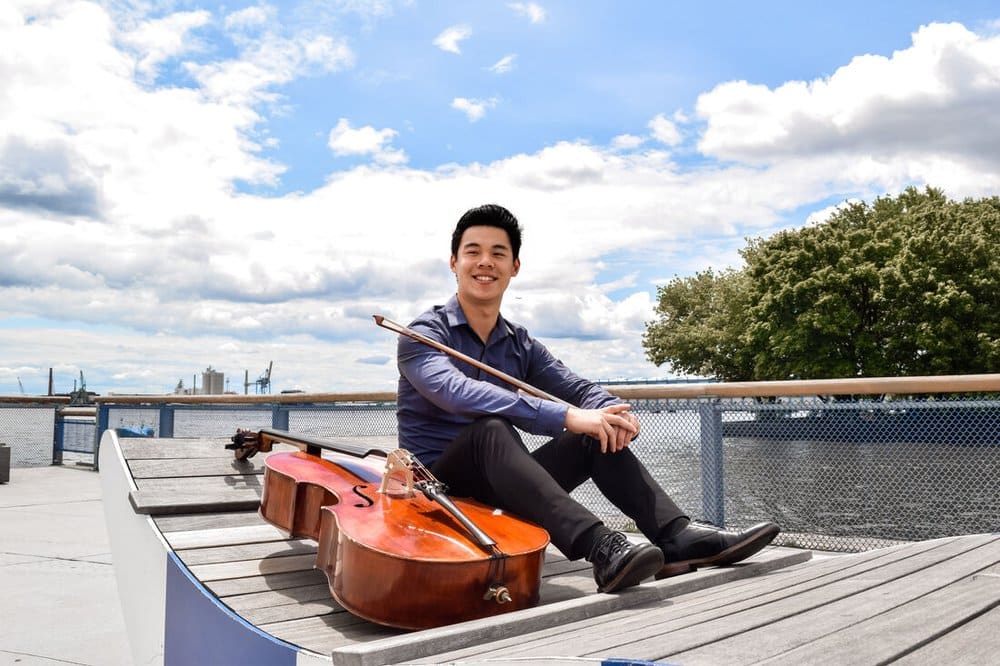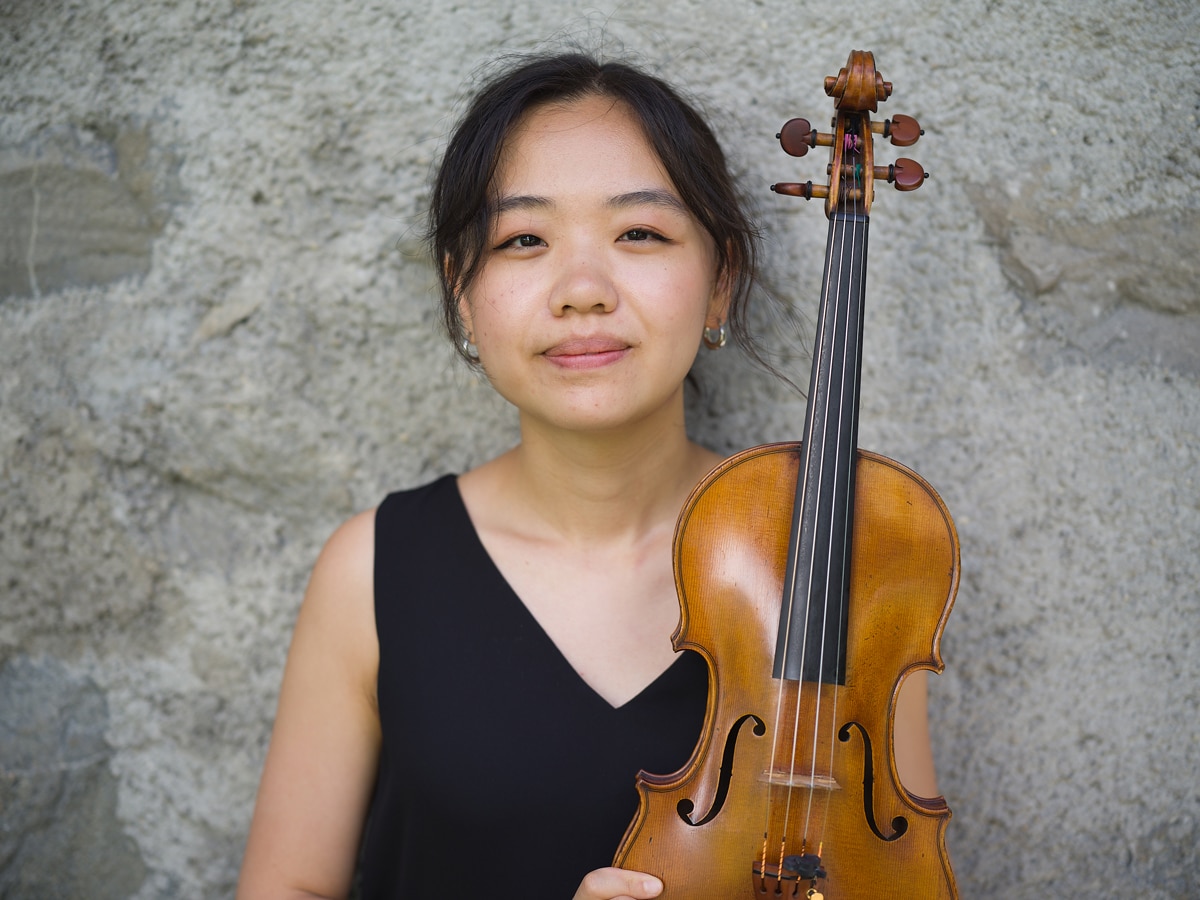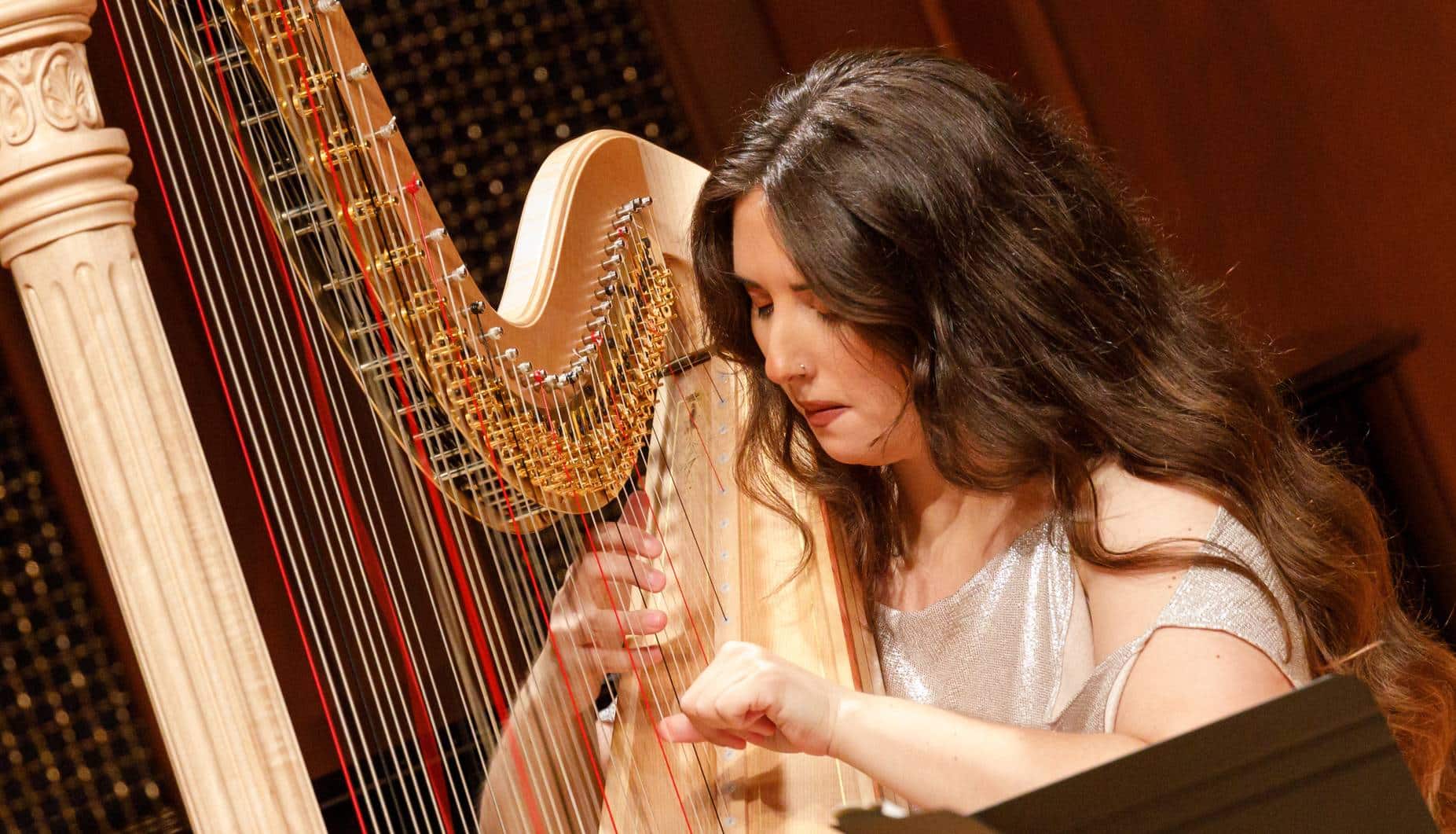Please enjoy the program notes for the online x2 Concert: French Focus. These program notes were created as part of Project Resonance, the Music Academy’s unique program combining writing training with public engagement. Through this initiative, both Academy fellows and young scholars from UC Santa Barbara are given the opportunity to work on program notes and other written materials for the Summer Festival.
WATCH NOW
CHARLES MARTIN LOEFFLER Four Poems
The Wikipedia entry about Charles Martin Loeffler is roughly 700 words long. There is one biography of Loeffler that is readily available at a university music school library, written by Ellen Knight, singular in her field as a Loeffler specialist. Loeffler’s name does not come up often on programs and it doesn’t ring bells for most musicians aside from a few seasoned chamber musicians. All in all, the image formed by Loeffler’s general absence from the modern stage and musical discourse is one of a composer mostly forgotten by posterity, and likely not particularly well known in his own lifetime. Yet the reality of Loeffler’s life reads very differently. He was quickly adopted and adored by Boston’s cultural elite in an era when Boston was the titan city of musical America. He was a member of the symphony, later a member of the opera’s board of directors, and generally considered a model citizen of noble character, wit, and refinement. In Ellen Knight’s words, Loeffler was “idolized by the Boston public and recognized internationally as one of the country’s most important creative talents.”
What happened to Charles Martin Loeffler? How does one go from the musical centerpiece of a nation seeking to find its own artistic voice free from the towering influence of Europe, to a mostly forgotten figure, cared for by one biographer and a few musicians who play his chamber works? One reality of Loeffler’s life may shed some light on why someone so loved and so creative fell mostly to the wayside. He was born German but was entirely French in his tastes, and in America he was the sole representative of the French style. Although he was a centerpiece of American musical society, he was an eclectic one, popular despite—not because of—a style that was out of the norm in America of the time. Yet in France, Loeffler was seen as American. In an era of intense nationalism, this lack of singular alignment with a nation and its musical principals put Loeffler into a muddy middle ground. Despite being born German, he was not part of the powerful German musical tradition, nor an imitator of Wagner. Neither was he part of the French camp that sought to escape Wagnerian influence and reestablish a French musical language. Loeffler was an American to Europe before being an American composer carried significant weight—the world did not yet know the likes of Charles Ives, George Gershwin, or Aaron Copland.
Many other elements of Loeffler’s life and output play into the contradiction between his fame during his own life and his absence in the canon. His output is scattered, for instance; Loeffler doesn’t have a large core of orchestral repertoire, he completed only one opera that has never been staged, and there is no bulk of solo piano works or concerti to attract the eyes of virtuosi. He was also intensely self-critical, a man who revised and edited his works extensively and destroyed many others. In the end, an artist’s legacy is largely out of their hands. There are too many aspects—the era they belong to, the country they came from, the shifting interests of the public—that they cannot control. Certain composers, some expected and some perhaps less so, have been solidified in the musical canon that we repeatedly draw from when we create programs, but now more than ever there is significant interest in programming beyond the confines of that canon. Hopefully Loeffler’s works will continue to see the benefits of growing interest.
– Alexander Soloway, Academy fellow, vocal piano
MAURICE RAVEL Introduction and Allegro for Harp, String Quartet, Flute, and Clarinet
Pleyel vs. Érard. This rivalry was the talk of Paris’ music scene in 1904. Upon the invention of the chromatic harp, the Pleyel company, a Parisian manufacturer of pianos and harps, reached out to famed composer Claude Debussy to write a piece to showcase their new achievement. The instrument he was tasked with writing for was unlike previous harps in that it had no pedals. Conventional harps of the time were made with seven pedals, one for each upper or lower accidental in the diatonic scale; Pleyel’s chromatic harp did away with them all together in favor of more strings. Each string now had a specific note assigned to it much like a piano, creating two rows of strings comparable to the relationship between white and black keys. The resulting composition was his Danse sacrée et danse profane, written for harp and orchestra. Though Debussy’s work was well received, and still exists in the repertoire today, the chromatic harp would go extinct soon after the Érard company fired back with its own instrument.
The double-action pedal harp was the newest model at the Érard company, retaining its seven pedals and featuring the newest mechanics the instrument could offer. Like Pleyel with Debussy, the Érard company commissioned Maurice Ravel to write a piece that featured their instrument and all of the technical possibilities it offered to a composer. He then began work on his Introduction and Allegro. Scored for harp, flute, clarinet, and a string quartet, the forces used in this septet are meant to surround and support the harp, making the advertisement for Érard’s instrument even more enticing.
Ravel wrote the piece at a remarkable pace in an attempt to finish it before going on a holiday with friends. That rush to complete it does not show in the work itself, as the piece is polished, refined, and holds its own next to other works in the composer’s output. Curiously, Ravel omitted the piece from his own catalogue, possibly because he wrote it so quickly or felt that it did not deliver to the usual standards to which he held himself. Ravel did not produce as many works during his life as other contemporaries such as Debussy or Gabriel Fauré, but every one of his pieces is so intricately and meticulously written that it would seem a detail-oriented composer like him would wish to have had more time to write the Introduction and Allegro. This may be the reason for its omission in Ravel’s mind.
Sixteen-year-old Micheline Kahn, a famed harpist of her time who won the Conservatoire de Paris’ prize for harp two years prior, was selected to perform the harp solo at the work’s premiere on February 22, 1907 in Paris. Érard’s harp reigned victorious, and Pleyel’s faded into history. One key difference between Debussy and Ravel’s works written for these two instruments is that Ravel was ultimately able to utilize a fuller spectrum of techniques and colors available on the instrument. An absolutely magical moment occurs near the end of the cadenza where the harp plays the second opening melody with harmonics while simultaneously playing glissandos high above the texture. This is one of the many techniques that would not have been possible on Pleyel’s harp, and it shows how well Ravel adapted to writing for Érard’s advertising needs. Such a wide range of sounds simply was not available to Debussy while he was writing for Pleyel. Though both composers were at the height of their careers when asked to write these pieces, Ravel demonstrated an awareness of his music’s purpose, which shows that a commercial containing all the features of a product can make or break its success.
– Benjamin Pawlak, Academy fellow, collaborative piano
IGOR STRAVINSKY Octet for Wind Instruments Where does music get its capacity to rouse emotions? An answer for this question has been sought by thinkers and musicians ranging from Plato to Kant to Bob Dylan, but for Igor Stravinsky the solution was internal to the music itself––and therefore independent of any one person’s interpretation. Although Stravinsky composed in many different styles throughout his career, his objective stance toward the emotional power of music is nowhere more exemplified than in the neoclassical works of the 1920s-50s. Despite an initially poor critical response (though a certainly less controversial one than he had experienced just ten years earlier with The Rite of Spring), the Octet for Wind Instruments (1923) proved to be one of the most pivotal works in his creation of a neoclassical idiom.
IGOR STRAVINSKY Octet for Wind Instruments Where does music get its capacity to rouse emotions? An answer for this question has been sought by thinkers and musicians ranging from Plato to Kant to Bob Dylan, but for Igor Stravinsky the solution was internal to the music itself––and therefore independent of any one person’s interpretation. Although Stravinsky composed in many different styles throughout his career, his objective stance toward the emotional power of music is nowhere more exemplified than in the neoclassical works of the 1920s-50s. Despite an initially poor critical response (though a certainly less controversial one than he had experienced just ten years earlier with The Rite of Spring), the Octet for Wind Instruments (1923) proved to be one of the most pivotal works in his creation of a neoclassical idiom.
Stravinsky himself identified the Octet as being distinct in conception from his earlier compositions (such as the great Russian pieces: The Firebird, Petrushka, and The Rite of Spring), and even went so far as to write a manifesto to detail his new compositional paradigm. He describes the work a “musical object” that, like hewn stone, assumes a pristine, logical, and immutable “architecture.” Stravinsky further explains that it was in an effort to make this architecture clearly audible that he derived the unique ensemble of this piece––flute, clarinet, two bassoons, two trumpets, tenor and bass trombone––in which the characteristic ranges and timbres of the instruments stratify into a heterogenous network of sound. Even in its most chordal passages (such as the opening theme of the Tema con variazioni, or the second part of the Finale), one can clearly hear the progression of each instrumental part as it moves through Stravinsky’s distinctive harmonies.
Though the Octet has come to be a staple of the wind ensemble repertoire, its refined sonorities and return to past forms (sonata, theme and variations, and 5-part rondo for the three respective movements) led a somewhat disappointed Aaron Copland, after seeing its world premiere in Paris, to describe it as “a mess of eighteenth century mannerisms” and a “bad joke that left an unpleasant aftereffect.”[1] But what the young American composer saw as an anachronistic pastiche came to exert tremendous influence on subsequent composers, particularly those working in France in the first half of the century; Francis Poulenc, Darius Milhaud, Arthur Honegger, and even Pierre Boulez bear the mark of Stravinskian neoclassicism in one way or another. While the expressive power of the Octet is certainly of a different ilk than that found in the works of Stravinsky’s 19th century predecessors (Rimsky-Korsakov, Glazunov, Tchaikovsky, etc.), there is a high degree of potency and vitality in its tightly controlled implementation of form and counterpoint. In fact, it was by conveying a quality of musical objectivity that Stravinsky hoped to free his composition from the contingencies of historical context and performative interpretation to allow instead for the realization of compositional means “which are emotive in themselves.”[2] Though this may seem like a composer’s fantasy, the Octet continues to captivate listeners through its adoption of a style that is at once far removed from quotidian experience and profoundly immediate, lucid, and enduring.
[1] Aaron Copland, The New Music 1900-1960 (New York: W.W. Norton, 1968), 72.
[2] Igor Stravinsky, “Some Ideas about My Octour,” The Arts, January 1924, quoted in White, Stravinsky: The Composer and his Works, 575.
– Nathan Cobb, PhD Student, Music Theory, UC Santa Barbara
[big-cast]





